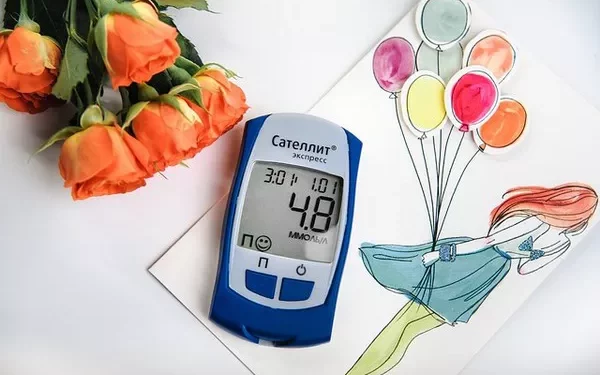Glucose, often referred to as blood sugar, is a vital component of our body’s energy source. It’s crucial for cellular function and overall health. However, maintaining glucose levels within a normal range is essential for preventing health complications, particularly for individuals with diabetes. Glucose testing plays a pivotal role in monitoring blood sugar levels, aiding in diagnosis, treatment, and management of diabetes. In this article, we delve into the intricacies of normal glucose test results, exploring what constitutes normal values, factors influencing these values, and the significance of understanding them in the context of overall health.
Normal Glucose Levels:
Before discussing normal glucose test results, it’s essential to understand what constitutes normal glucose levels in the body. In a non-diabetic individual, fasting blood glucose levels typically fall within the range of 70 to 99 milligrams per deciliter (mg/dL). After consuming a meal, blood glucose levels may temporarily rise but should return to normal levels within a few hours. Postprandial (after-meal) glucose levels in non-diabetic individuals generally remain below 140 mg/dL two hours after eating.
Fasting plasma glucose (FPG) tests and oral glucose tolerance tests (OGTT) are commonly used methods to assess glucose levels. A fasting plasma glucose test measures blood sugar levels after an overnight fast of at least eight hours. An OGTT involves measuring blood sugar levels before and two hours after consuming a standardized sugary drink. Normal results for these tests indicate that glucose metabolism is functioning within healthy parameters.
Factors Influencing Glucose Levels:
Various factors can influence blood glucose levels, both in individuals with and without diabetes. Understanding these factors is crucial for interpreting glucose test results accurately.
Diet: Carbohydrate-rich foods can cause blood sugar levels to rise, especially in individuals with impaired glucose metabolism. Monitoring carbohydrate intake and making healthy dietary choices can help regulate blood sugar levels.
Physical Activity: Exercise can lower blood sugar levels by increasing insulin sensitivity, allowing cells to absorb glucose more effectively. Regular physical activity is beneficial for maintaining healthy blood sugar levels.
Medications: Certain medications, such as corticosteroids and some antipsychotic drugs, can elevate blood sugar levels. It’s essential for individuals taking these medications to monitor their glucose levels regularly.
Stress: Stress hormones, such as cortisol, can cause blood sugar levels to rise. Managing stress through relaxation techniques and mindfulness practices may help stabilize blood sugar levels.
Illness or Infection: Infections and illnesses can trigger an immune response that raises blood sugar levels. Individuals with diabetes should monitor their glucose levels closely during times of illness and consult a healthcare professional if levels are consistently high.
Interpreting Glucose Test Results:
Interpreting glucose test results involves comparing the measured values to established reference ranges and considering individual factors such as age, medical history, and concurrent medications. Here’s a breakdown of how to interpret various glucose test results:
Normal Fasting Plasma Glucose (FPG) Test Result:
- Normal Range: 70-99 mg/dL
- Interpretation: A fasting plasma glucose level within this range indicates that glucose metabolism is functioning normally. It suggests that the body can effectively regulate blood sugar levels during periods of fasting.
Impaired Fasting Glucose (IFG):
- Range: 100-125 mg/dL
- Interpretation: IFG indicates higher than normal fasting blood sugar levels, but not high enough to be diagnosed as diabetes. It’s considered a precursor to type 2 diabetes and warrants close monitoring and lifestyle modifications to prevent progression.
Normal Oral Glucose Tolerance Test (OGTT) Result:
- Fasting: <100 mg/dL
- 2 Hours After Glucose Load: <140 mg/dL
- Interpretation: Normal OGTT results indicate that the body can efficiently metabolize glucose following a standardized glucose challenge. It suggests that insulin secretion and sensitivity are within healthy parameters.
Impaired Glucose Tolerance (IGT):
- Fasting: <126 mg/dL
- 2 Hours After Glucose Load: 140-199 mg/dL
- Interpretation: IGT signifies higher than normal blood sugar levels following a glucose challenge, indicating impaired glucose metabolism. It’s a precursor to diabetes and requires lifestyle interventions to prevent progression.
Normal Random Blood Glucose Test Result:
- Range: <140 mg/dL
- Interpretation: A random blood glucose level below 140 mg/dL is typically considered normal. However, for individuals with diabetes, target ranges may vary depending on individualized treatment goals.
Significance of Understanding Normal Glucose Test Results:
Understanding normal glucose test results is essential for several reasons:
Early Detection of Diabetes: Monitoring blood sugar levels and recognizing deviations from normal values can facilitate early detection and intervention in individuals at risk of developing diabetes.
Prevention of Complications: Maintaining blood sugar levels within normal ranges can reduce the risk of diabetes-related complications such as cardiovascular disease, neuropathy, and kidney damage.
Treatment Optimization: For individuals with diabetes, knowing their target blood sugar ranges allows for better management of the condition through medication adjustments, dietary modifications, and lifestyle changes.
Health Monitoring: Regular glucose testing provides valuable insights into overall health and helps track the effectiveness of diabetes management strategies over time.
See also:What Does A Blood Glucose Monitor Do
Conclusion:
Normal glucose test results indicate that blood sugar levels are within healthy parameters, reflecting efficient glucose metabolism and insulin function. Understanding these results and the factors that influence them is crucial for maintaining overall health and preventing diabetes-related complications. Regular monitoring of blood sugar levels, adherence to a healthy lifestyle, and timely intervention when necessary are essential components of diabetes management. By empowering individuals with knowledge about normal glucose levels and the significance of test results, we can promote better health outcomes and improve quality of life for those affected by diabetes.
Related topics:

























